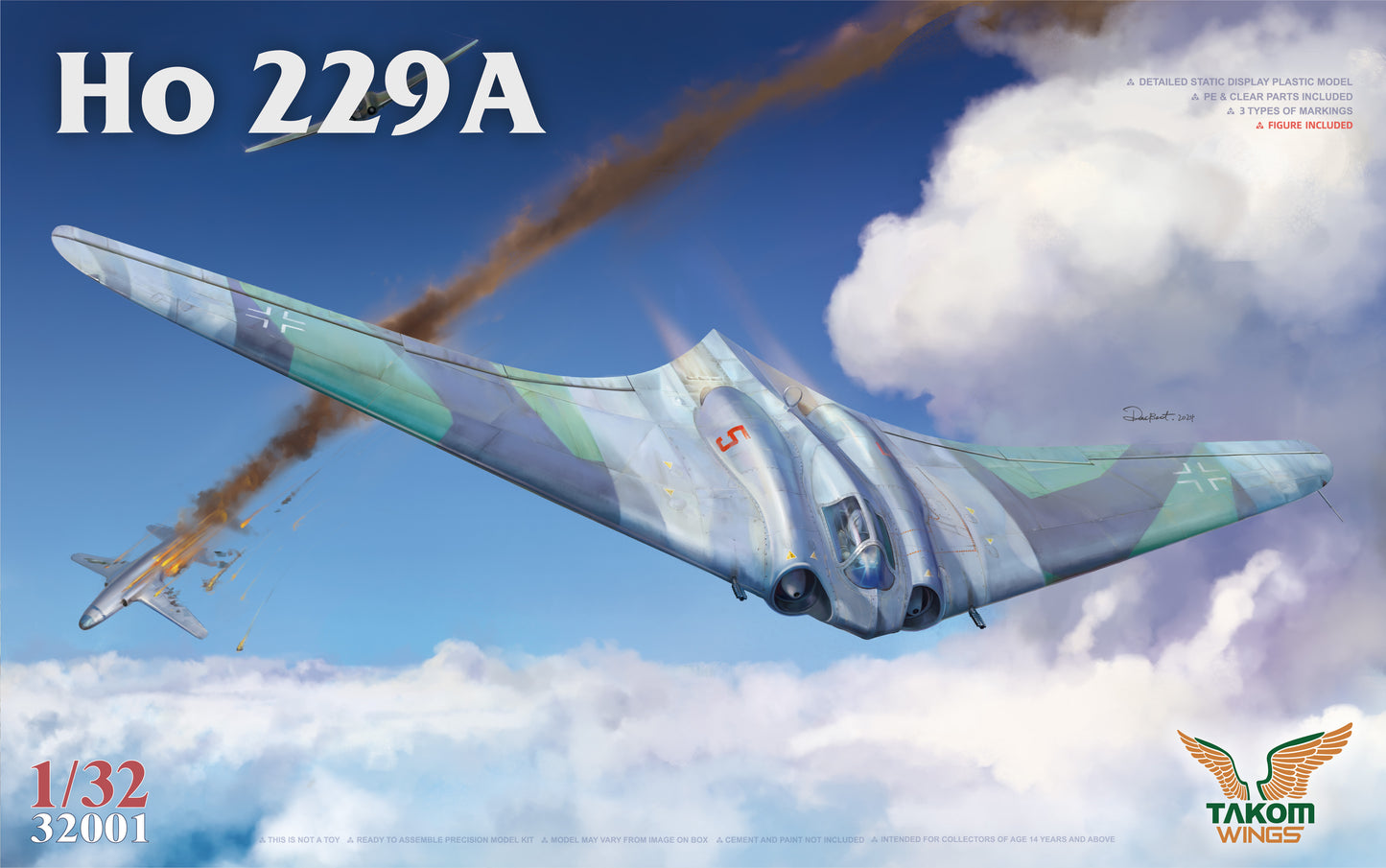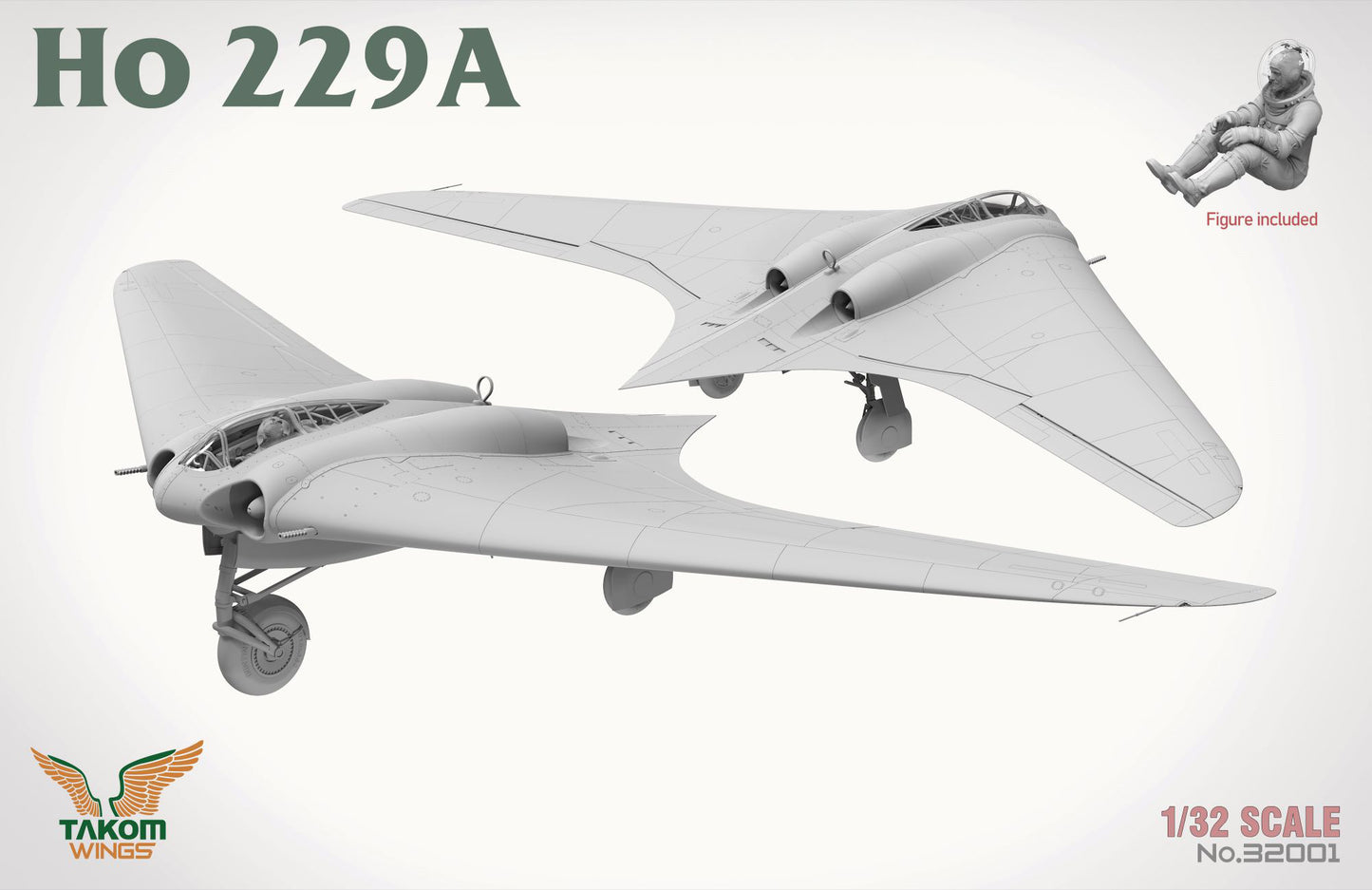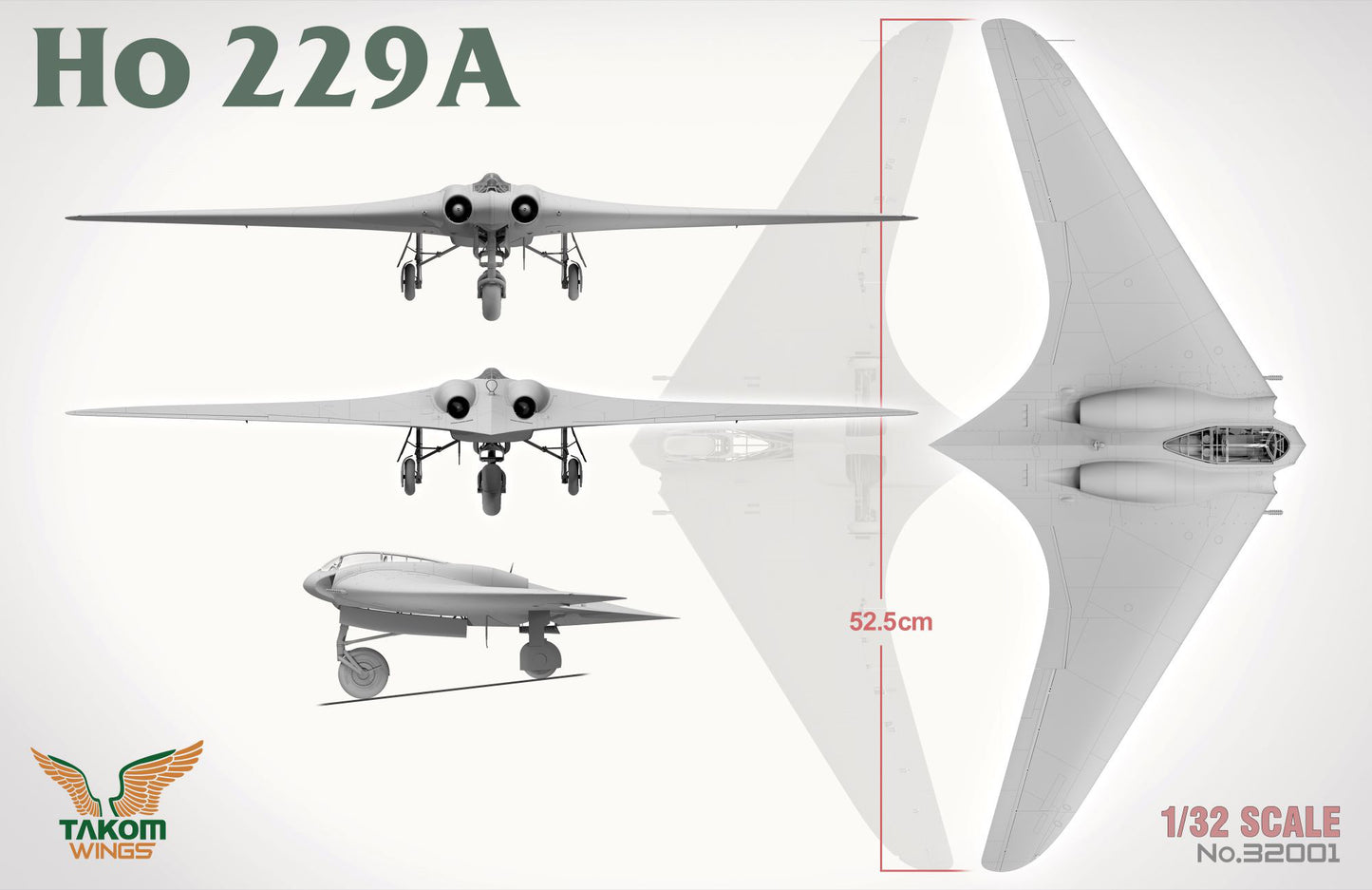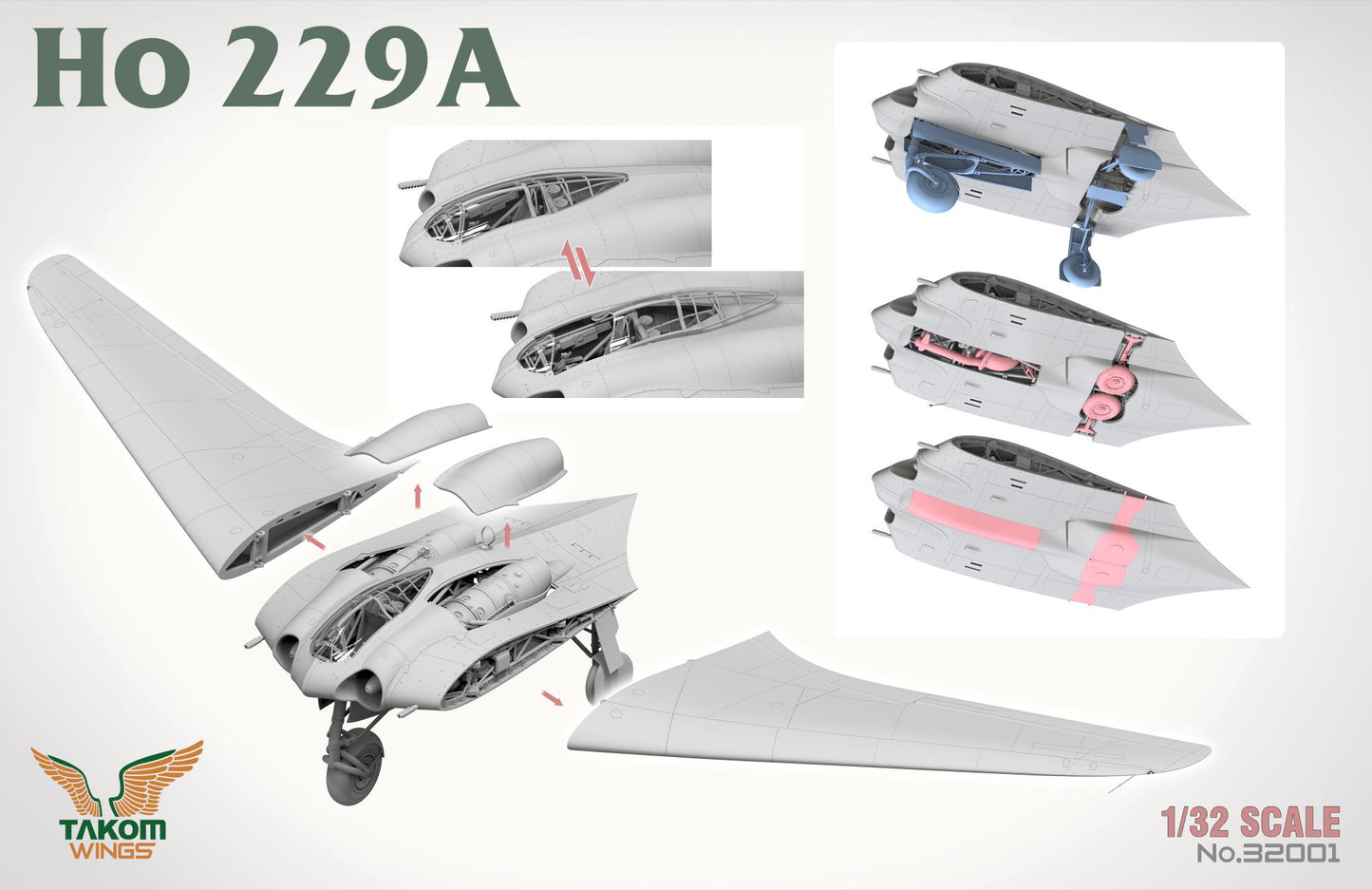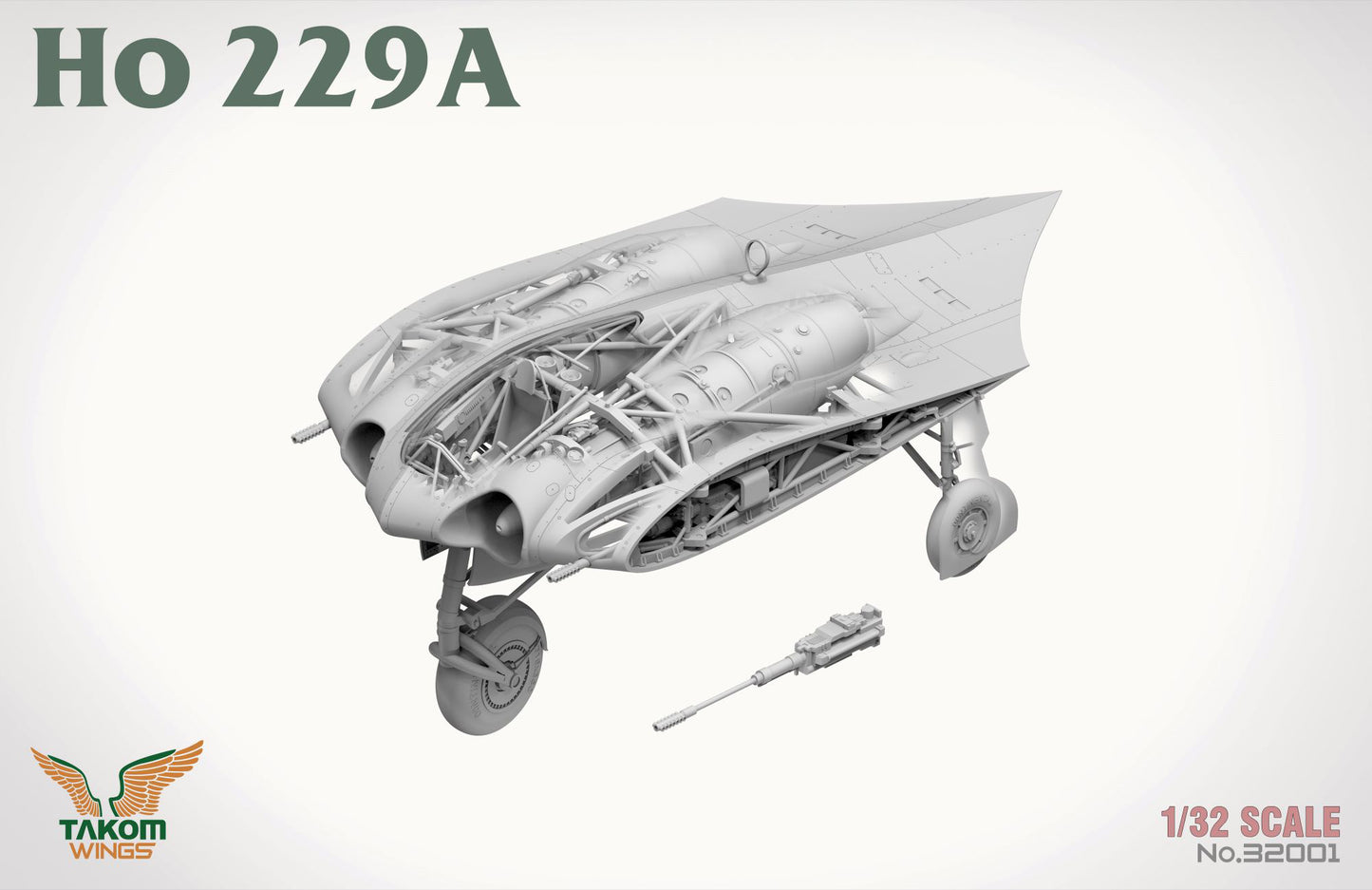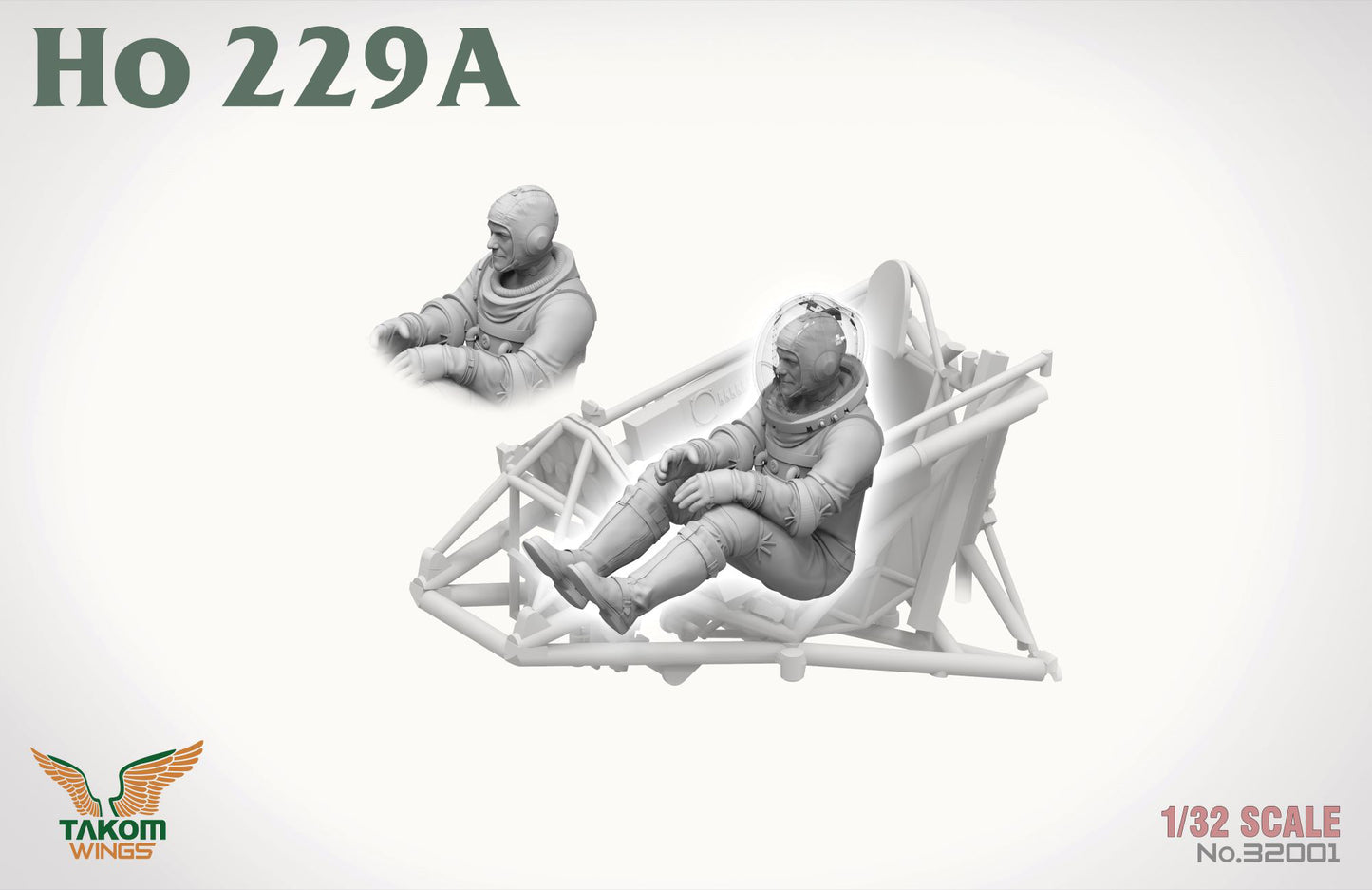ScaleCraft Studios
Takom Wings 1/32 Horten Ho 229A (In Stock June)
Takom Wings 1/32 Horten Ho 229A (In Stock June)
Couldn't load pickup availability
The History and Development of the Horten Ho 229
The Horten Ho 229, often referred to as the Gotha Go 229, was one of the most advanced aircraft designs of World War II. Developed by the Horten brothers, Walter and Reimar, this experimental flying wing was a revolutionary step toward stealth technology and jet-powered aviation.
Origins and Development
The origins of the Ho 229 can be traced to the Horten brothers’ fascination with tailless, all-wing aircraft. During the 1930s, they experimented with various glider designs, refining their theories of aerodynamics and reducing drag by eliminating traditional fuselage and tail structures.
In 1943, in response to a call from the Luftwaffe for a high-speed, jet-powered fighter-bomber capable of carrying a 1,000 kg bomb load, the Horten brothers proposed their radical flying wing design. The aircraft was designated the Ho IX and featured a blended-wing structure, which significantly reduced its radar cross-section—a precursor to modern stealth aircraft.
The Reichsluftfahrtministerium (RLM) approved development, and the project was later assigned to Gothaer Waggonfabrik, which designated it as the Go 229. The first prototype, the Ho 229 V1, was an unpowered glider that successfully demonstrated the aircraft’s handling characteristics. The second prototype, the Ho 229 V2, was equipped with two Junkers Jumo 004B turbojet engines. It made its first flight in early 1945 but crashed due to engine failure.
Technical Specifications and Design Features
The Ho 229 was constructed primarily from wood and composites, which reduced weight and minimized radar detectability. It featured tricycle landing gear, a semi-monocoque fuselage, and a blended-wing shape that optimized lift and stability. The planned armament included two 30mm MK 108 cannons, with the potential to carry bombs or rockets.
Had it entered production, the Ho 229 might have been a formidable aircraft, capable of speeds exceeding 900 km/h (560 mph), with a potential operational ceiling of 15,000 meters (49,000 feet). However, the war ended before the aircraft could be fully developed.
Fate and Influence
As Allied forces advanced into Germany, the Ho 229 V3 prototype was captured by American troops and transported to the United States as part of Operation Paperclip. Today, the incomplete airframe is housed at the Smithsonian National Air and Space Museum.
The Ho 229’s innovative design influenced later aviation developments, particularly in the realm of stealth technology. Its flying wing configuration directly inspired post-war aircraft such as the Northrop YB-35 and YB-49, eventually leading to the B-2 Spirit stealth bomber.
Takom Wings 1/32 Ho 229A and 229B Model Kits
Takom’s Wings series has brought the groundbreaking Horten Ho 229 to life in 1/32 scale with highly detailed model kits of both the Ho 229A and the never-built Ho 229B variant. These kits provide modelers with an excellent opportunity to build and appreciate the engineering behind this advanced aircraft.
Ho 229A Kit
The Ho 229A kit replicates the V3 prototype, incorporating detailed engine components, an intricate cockpit, and an accurately contoured flying wing. The kit includes:
-
Highly detailed Junkers Jumo 004B engines with visible internal structures
-
Photo-etched details for enhanced realism
-
Landing gear options for both in-flight and landed configurations
-
Optional open panels to showcase internal features
-
Decals for Luftwaffe markings
Ho 229B Kit (Hypothetical Nachtjäger Variant)
Takom’s Ho 229B kit imagines a never-built night fighter version of the aircraft. This speculative model includes:
-
A stretched and reinforced airframe to accommodate advanced avionics
-
Nose-mounted radar array similar to the ones used on the Heinkel He 219
-
Additional armament, including MK 108 cannons and possible R4M rockets
-
Unique camouflage and markings reflecting late-war German night fighter schemes
Both kits feature excellent fit and finish, making them a must-have for modelers interested in experimental World War II aircraft. Their large 1/32 scale allows for intricate detailing and realistic weathering effects.
Conclusion
The Horten Ho 229 remains one of the most fascinating aircraft of World War II, embodying radical aerodynamics and early stealth principles. The Takom Wings 1/32 Ho 229A and 229B kits offer an excellent way for modelers to explore this unique aircraft’s history, with an outstanding level of detail and accuracy. Whether building the real-world V3 prototype or the speculative B variant, these kits capture the essence of one of aviation’s most intriguing designs.
Share
